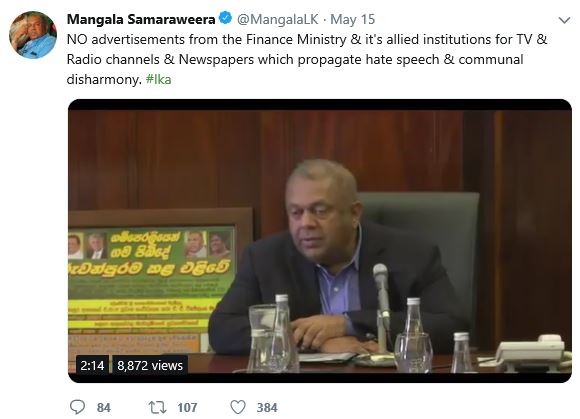Reviews
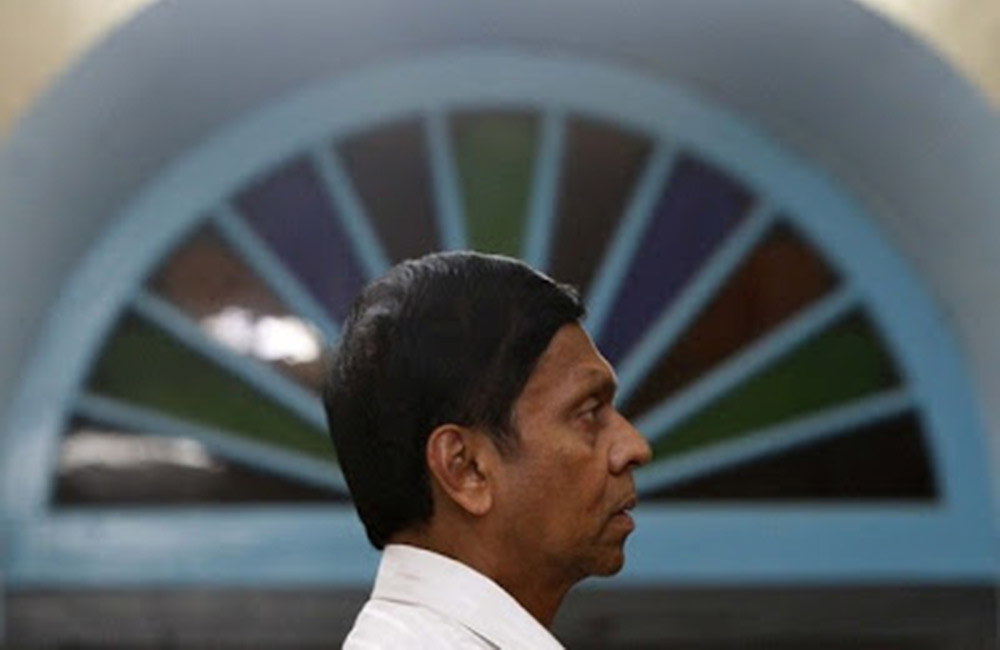
The great 'forensic audit allergy'
He headed the firm Cabraal Consulting Group which specialised ironically in corporate governance. From the moment it was announced that five forensic audit reports on the Central Bank bond transactions and raising of related public debt was due to be released, he was running like a man whose pants were on fire and started writing in the guest columns of reputed English newspapers with disparaging remarks on the conduct of the forensic audit and the Central Bank, not sparing the Presidential Commission of Inquiry (PCOI) appointed to investigate the bond transactions from 1 February 2015 to 31 March 2016.
He went to the extent of writing a book on the forensic audit that was conducted, faulting the Central Bank and the previous Government on the manner in which the audit was commissioned and picking holes in the PCOI conclusions and its recommendations and also commenting on possible findings in the forensic audit report. It is now possible to see why this forensic audit caused much anxiety to Cabraal.
‘Forensic audits part of bond scam cover up’
In the guest column of the Weekend FT of 25 January writing under the heading ‘Forensic audits part of bond scam cover up,’ Cabraal attempts to paint a picture that the probes COPE committee inquiries and PCOI investigations are all ‘non-punitive’ investigations initiated to enable perpetrators to evade arrest.
The bond issue of 27 February 2015 and those up to March 2016 do not strictly fall into the category of fraud but they can be irregular and not in compliance with the applicable rules, practices and norms. For an act to be termed as a fraud, the elements constituting fraud have to be established, namely, (1) a representation of a fact that is false (2) its materiality; (3) the representer’s knowledge of its falsity and his intent that it should be acted upon by the person to whom the fact is presented (4) the injured party’s ignorance of its falsity and his reliance on the fact, believing it to be true and (5) the injured party suffering loss or proximate injury.
In the case of the February bond issue in question, it cannot be easily determined who made the representation (Primary Dealer or Central Bank) and who is the victim because the bond transaction took place in an auction where ‘bid’ and ‘offer’ were in operation. The probable criminality therefore comes into play if it can be established that there was insider trading in respect of the Bond issue and the nexus between former Governor Mahendran and Perpetual Treasuries which needs to be proven with evidence. It is therefore practically not possible for the CID to investigate these transactions and related information and the best possible methodology that was available was the appointment of the Presidential Commission.
He goes on to state that former Prime Minister Wickremesinghe made a direct proposal to the Bond Commission and based on it, the PCOI recommended a forensic audit. It is pertinent to quote the relevant recommendation of the PCOI:
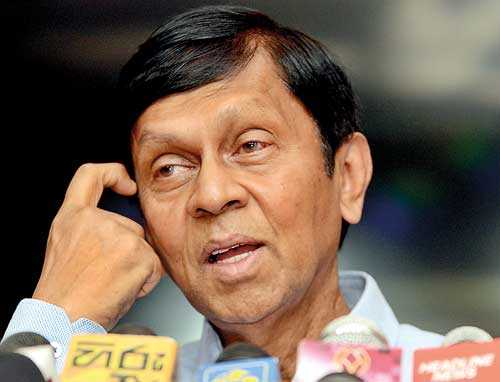
It is therefore evident that the PCOI recommended the forensic audit based on the facts presented to it and not because of any suggestion or proposal by Wickremesinghe or anyone else. The forensic audit report he says was purportedly converted into an instrument to sling mud at the ‘pre-2015’ political authorities and Central Bank administration based on inaccuracies, distortions and downright lies and its main purpose was to whitewash the corrupt Wickremesinghe administration.
Denigrating the forensic audit
In his previous article on 4 December 2019, Cabraal faulted the Central Bank on the manner in which auditors for forensic audit were selected. The Central Bank clarifying the position on 21 January 2020 stated: “a) the Monetary Board, in consultation with the Auditor General and the Attorney General, took measures to commission six forensic audits pursuant to the recommendations of the Presidential Commission of Inquiry appointed to investigate and inquire into and report on the issuance of Treasury bonds and matters that had come to light over the recent years in audit reports and in findings of internal investigations pursuant to the exercise of certain regulatory and agency functions undertaken by the CBSL. b) The procurement of the five forensic audits were carried out by a Cabinet Appointed Consultant Procurement Committee and the contracts were awarded to audit firms with a global practice and international experience in forensic auditing with the approval of the Cabinet of Ministers.” The auditors selected for the forensic audit were Binder Dijker Otte or BDO (India) and KPMG Sri Lanka. BDO is an internationally-reputed firm of auditors associating with public accounting, tax, consulting and business advisory firms with member firms in 162 countries, especially in Europe and KPMG are well known in Sri Lanka as highly-reputed auditors. BDO and KPMG are firms that will never engage in assignments to whitewash any institution, company or individual and taint their own reputation which is held in high esteem worldwide.
Cabraal goes further to denigrate the forensic audit stating: “In fact, the unprofessional ‘cherry-picking’ of data, seriously flawed analysis, inaccurate findings, deliberate overlooking of material facts, obviously false findings, and blatantly biased conclusions confirm that the purported Forensic Audits were engineered by those vested interests.” He adds blatantly-politically motivated undertones are reflected in the purported forensic audit reports. These unsubstantiated and inimical comments are intended to discredit the internationally-renowned auditors.
He tries to argue that since the forensic audits were carried out under the authority of the Monetary Board as stated by former Governor Dr. Indrajit Coomaraswamy and because the Board comprised Chrysantha Perera and Dr. R.H.S. Samaratunga under whose watch the alleged bond scams took place, the forensic audit is hopelessly compromised.
Cabraal deliberately fails to mention that Dr. Coomaraswamy was in fact the Chairman of the Monetary Board as Governor and any taints in this regard therefore should rub on him as well. He is bragging about steps that will be taken to professionally refute and deal with various ‘innuendo and insinuations’ reflected in the reports. He is however careful not to reveal the comments or findings in the reports, on which he will do this. It is foolish and unprofessional on the part of Cabraal to tarnish the reputation of audit firms like BDO and KPMG.
Giving himself a clean certificate
He is giving a clean certificate to himself on the bond issues from 2006 to 2014. The bond issues during that period is covered in the forensic audit reports and more startling facts will come out. However, his precarious adventure in buying non-investment grade Greek bonds that cost the country Rs. 3.4 billion and his engagement of lobbying firms and others for services not coming under Central Bank’s purview costing around Rs. 340 million (Sunday Times 13 September 2015) and also the cost to the country of Rs. 9.7 billion resulting from the hedging deal on petroleum in which it is widely believed that Cabraal had been a prime mover. So it is not wise to throw stones from a glass house.
He quotes the possible loss due to change of procedure for bond sales in February 2015 could run up to Rs. 1 trillion. How he calculated this is a mystery. Governor Cabraal tries to emphasise that the switch to auction process when issuing Treasury bonds had paved the way for perpetrating a ‘scam’ and the previous process of direct placements was transparent and scientific and it had enabled the exchequer to save billions. Only Cabraal can explain the logic in this contention.
As Governor and Chairman of the Monetary Board, he is responsible for the reckless investments and unnecessary expenses incurred by the Central Bank during his watch as chief and the colossal loss to the country is irrecoverable. He will certainly try to blame others for these losses.
It is relevant to quote from the founder Governor of the Central Bank, John Exter’s report which stated: “Although the ultimate authority rests in the Monetary Board, the draft law nevertheless recognises need for a strong chief executive for the Central Bank. Accordingly, the Governor is made the Chairman of the Monetary Board, and is given control of the agenda for its meetings. He is to be responsible for the execution and administration of policies and measures adopted by the Monetary Board, for the direction, supervision and control.”
Casting aspersions on Presidential Commission of Inquiry
Whilst trying to undermine the forensic audit and create doubts in the minds of the public, he also casts aspersions on the Presidential Commission of Inquiry which investigated bond issues during the period 1 February 2015 to 31 March 2016.
To cite one instance, he writes in his article to Daily FT on 4 December 2019: “In this connection, it is very strange that the Bond Commission has not considered the following factual certainties and not ‘likelihoods’ in making their recommendation to carry out a forensic audit.”
It is relevant to recall that the Presidential Commission of Inquiry appointed to look into the bond issues from 1 February 2015 to 31 March 2016 comprised of eminent judges of the Supreme Court Justice K. T. Chitrasiri and late Justice Prasanna Jayawardena and retired Deputy Auditor General Kandasamy Velupillai. His derogatory remarks on the PCOI also harms the reputation of the Commissioners, who did a meticulous job of investigation and evaluation of facts and evidence to produce a brilliant report with far-reaching recommendations.
Ajith Nivard Cabraal, a Chartered Accountant and former Governor of the Central Bank, argues that both the Bond Commission Report and the forensic audit, the outcome from it, are faulty and not reliable and the forensic audit was carried out to ‘whitewash’ a certain political authority. He therefore implies that these reports should be rejected.
Well, if that be the case, former Governor Arjuna Mahendran and Perpetual Treasuries implicated in the said irregular bond transactions should be exonerated and indictments filed against him and the primary dealer in courts should be withdrawn.
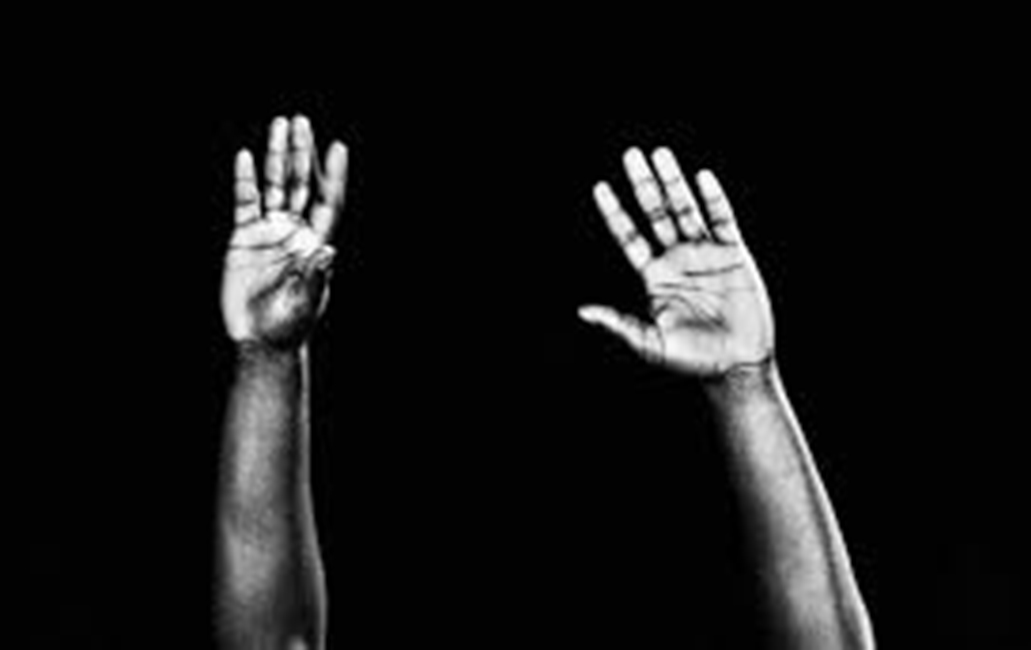
Arm-Twisting by the Black Media
By Arjuna Ranawana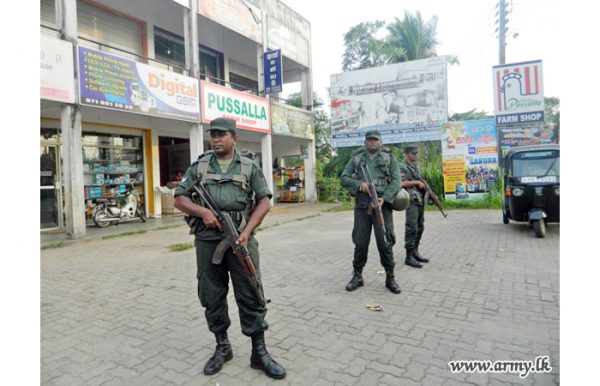 Troops in the Kuliyapitiya area keeping the peace/army.lk
Troops in the Kuliyapitiya area keeping the peace/army.lk
N M Ameen is not a man known for wearing his sadness on his sleeve.
The avuncular 44-year veteran of Sinhala and Tamil Media in Sri Lanka is now Editor of the Navamani newspaper and President of the Sri Lanka Muslim Council.
As a Media activist he has fought against censorship and violence perpetrated on journalists.
On May 9 he became a victim of the very media he has sought to free.
At a press conference Ameen quoted President Maithripala Sirisena as saying many homes in Sri Lanka keep swords to protect their women.
Hiru news decided to drop the reference to the President and present the statement as Ameen’s.
In a racially charged atmosphere fuelled by an incessant spate of video reports showing swords and knives recovered from Mosques and other Muslim sites, this quote took a life of its own.
Ameen was pilloried on social media.
An official complaint was made to Hiru, which did not apologise, but eventually ran the full video statement.
“By then the damage had been done,” says Ameen.
Media rode a wave of anti-Muslim sentiment
This is one of the many examples of irresponsible behavior by several leading Media outlets that unashamedly rode a wave of anti-Muslim sentiment during the weeks after the Easter Sunday bombings.
There were inflammatory stories, twisted and manipulated tales and outright lies.
Quite often stories are planted in the newspapers in the night and in the morning the broadcast channels read them out on their morning shows, conveying a message that caters to and reinforces a particular political agenda.
That anti-Muslim wave came from the mostly Sinhala Buddhist majority with known racist figures playing a part. There were quite a few from amongst the Christian community too.
What media outlets want are ratings and circulation. What they give the nation is fear, instability, and more insecurity.
Mangala fights back with arm twistingAnother victim was Finance and Mass Media Minister Mangala Samaraweera.
Always unafraid to articulate his Liberal position he said “Sri Lanka is not a Sinhala Buddhist country but a country belonging to all who have taken Sri Lanka as their motherland.”
Mangala is right but the racist attacks on him was like a tsunami.
Then he decided to fight back.
Last week he summoned the heads of state banks and asked them to withdraw advertising from the country’s most popular Television stations Hiru and Derana.
The state banks spend at least Rs. 4.5 billion a year advertising on TV and radio.
That is a whopping amount of money for this country’s media industry.
The ad ban is now widening. Advertising industry sources said the national carrier Sri Lankan Airlines as well as other major organizations are also withdrawing advertisements from the Hiru and Derana channels.
Samaraweera made this move because, he said, these two organizations were “spreading hate speech to provoke communal violence.”
A senior manager from Derana confirmed to RepublicNext that advertising had been pulled from them by all government institutions.
He also said that Derana is not dependent on government advertising so this will not affect them.
He rejected the charge that his channel was spouting hate speech and pointed out they had complied with Information Department requests not to show some items which may provoke rioters.
Media activists decry the move
The Convener of the Free Media Movement Chandrasiri Dodawatte says if there is an issue of hate speech “then there has to be a proper, transparent process by which that should be dealt with.”
He has a point. There are Emergency Regulations, including several promulgated on Friday (17), by which the authorities can prosecute individuals or organisations for hate speech that incites a riot.
Ameen says “there are many ways the government could have taken action against this kind of reporting.”
“Stopping government advertising to these channels is not the way,” Dodawatte added.
Ameen too agrees that financial arm-twisting is setting a bad precedent.
But it looks like the government has decided to take direct action against these Media organisations rather than get mired in a legal swamp.
Sri Lanka does not have a clear and transparent government advertising policy unlike other countries in the region.
There are no regulations and whatever decisions that are taken with regard to the spread of advertising are not publicly known.
In Sri Lanka’s comparatively small market, the government, because it runs so many State Owned Enterprises, is the biggest advertiser.
Throughout our modern history, successive governments have sought to influence editorial decision making by placing or withdrawing advertisements.
In some cases it is known that newspapers with smaller circulation figures get substantial government ads while others with a wider readership get much less.
The behavior of many Media outlets has been horrifying and very damaging to the unity and integrity of Sri Lanka.
This is not the first time it has happened. During the war, for instance, the media was racially divided.
A martyr in one language media was a villain in the other language. Research done for the Centre for Policy Analysis by Dr. Arjuna Parakrama in Media Monitor has given us a host of details about this type of manipulative reporting.
It has continued to keep the country divided and antagonistic.
During the 52-day period where the President sacked the Prime Minister and appointed the Leader of the Opposition to head the government some Media houses were openly partisan.
No wonder civil society activists call these institutions the Black Media.
More public pressure should come on Media houses engaging in such journalistic practices.
At the same time the Editors and Journalists should, at least now, do some soul searching and desist from distortion and fake news.
That should be the way ahead so that the Media can play a unifying role.
But arm-twisting the Media by withdrawing advertisements is not the best method.
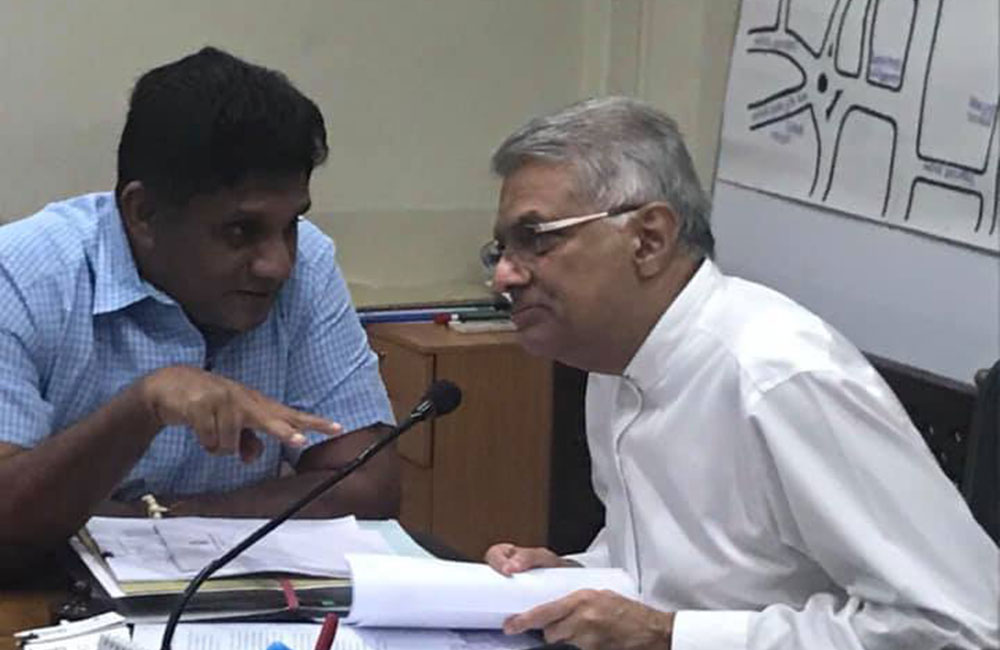
The case for a Sajith Premadasa candidacy
By THE EXPLORER
The case for a Sajith Premadasa candidacy is different from the case for a Sajith Premadasa Presidency. It is arguable that even those who prefer a Gotabhaya Presidency could opt for a Sajith candidacy if it leads to a stronger UNP showing, and results in a stronger balancing factor in Sri Lankan politics which would act as a safeguard for democracy.
What is a candidacy about? It is about winning the largest number of votes for one’s side. How one chooses the candidate from the available alternatives should be based on who is most likely to generate the most votes for one’s side. That would depend on the context in the country when the election is due to be held, the nature of the opponent, and the profiles of the contenders on one’s side.
The case for a Sajith Premadasa presidency is that he is logically the best legatee of the Premadasa model of development which in turn is demonstrably the best the island has ever experienced in that it was a combination of rapid growth, a stock market that took off, increased foreign investment, a dramatic reduction of inequality, the spread of industry to the rural areas, and the reduction of absolute and relative poverty. It can also be argued that the late President Premadasa combined a multiethnic, multicultural, multireligious, multilingual pluralism with a robust patriotism, and that his son would be the closest approximation of a non-ethnocratic, pluralist, inclusionary nationalism; a nationalism that heals rather than an aggressive one that dominates and imposes, or a cosmopolitanism that rejects patriotism or nationalism.
On the question of national security and the current threat of ISIS terrorism that the country faces, a pluralist approach to minorities would be a far better “soft power” accompaniment of a counterterrorist campaign against Islamist jihadism; one capable of winning over the middle ground, than a tougher ultranationalist approach which would be far more polarizing and eventually counterproductive.
However, all of that is part of a debate for the last quarter of this year; not the third quarter in which the issue is who the contest should be held between.
The Economist Intelligence Unit (UK) has already predicted a Gotabhaya victory quite explicitly in its recent position paper ‘What would a Gotabhaya Presidency look like?’ It pessimistically argues though that the Gotabhaya camp’s strident ethnoreligious majoritarian attitude to minorities would trigger a major crisis which would eventually undermine both national political stability as well as economic stability over the long term, i.e. that the stability his Presidency brings will not prove sustainable because the fault-lines will widen. Several months earlier, the Heritage Foundation, closely associated with the US Republican party, predicted not only a victory of the camp led by Mahinda Rajapaksa but also said that the UNP would not get more than 30%. In their view, the UNP is way behind in the race.
A recent public opinion poll carried out by a leading newspaper on the issue of SOFA shows a NO vote, i.e. a vote against it, which hovers around 60% and a YES vote, i.e. a vote in favor, which is in the very low 30% range. That is a true reflection of the pro-Western camp and the patriotic or nationalist camp in Sri Lankan society and politics today. Indeed, the actual situation may be even more dramatic. If only 32% of the cosmopolitan readers of an English language approve of SOFA and 60% oppose it, one may imagine what the real balance of sentiment may be among the Sinhala language readers who are considerably more numerous. These figures give an indication of what the balance of opinion is in favor of and against the perspective and ideology of the UNP Establishment which is associated with the attempt to sign the agreement, and the degree to which the latter is alienated from the people and society at large.
In such a situation a cosmopolitan neoliberal candidate is unlikely take the UNP below 30%. It is hard to imagine any senior Establishment figure would be able to take the UNP above 30% when there is a swing against the pro-Western UNP Establishment as in 1956 and 1970.
Apart from Sajith Premadasa that leaves Sarath Fonseka, Champika Ranawaka and Navin Dissanayake. Fonseka’s national security credentials are matched by Gotabhaya who offers more in the macro-managerial realm. Especially with the garbage collection crisis underway, Ranawaka has little to offer except aspirations in a field that Gotabhaya can point to actual large-scale achievement. He may also alienate minority votes.
Navin Dissanayake has demonstrated electoral success but with heavy minority support, but his ability to break into the nationalist-populist Sinhala Buddhist vote has not yet been proven. Unlike Sajith, it is not likely that he could compete effectively with the front runner, Gotabhaya, on his own social terrain.
The UNP has shrunk so much under its quarter century long leadership, that even the full mobilization of the party and its base vote cannot easily win an election especially after the past few years of total lack of constructive achievement and the stigma of the Central Bank Bond scam. It needs someone from its own ranks who can rally all its troops for an election campaign and rekindle enthusiasm. Who is most likely to revive the UNP, to give it hope?
The answer is very plain. At the UNP’s May Day plus Indoor Convention of two years ago, one speaker got a sustained ovation from the faithful, including from those standing outside complaining that they could not get in—and that was Sajith Premadasa. There were the two ‘flash’ mobilizations in Colombo in the last quarter of last year, against the Prime Ministership of former President Mahinda Rajapaksa. and the only one who evoked sustained, near-hysterical applause and whistles, before, during and after his speech, was Sajith Premadasa. At the recent rally in Badulla too, the enthusiasm of his respectably-sized audience was considerable.
Sajith is the only UNPer who has the bitter battle experiences of fighting the popular and powerful Rajapaksa clan on their own home turf, the patriotic Ruhuna. He has lost some and won some battles, but he is the only one who has gone head-to-head and survived while preserving his own electoral space there. He has sustained a long political war.
The Opposition’s candidate, Gotabhaya, can break into, and doubtless has already broken into the UNP’s middle class urban vote by profiling himself as a better, more managerial-technocratic, militaristic and stronger version of the UNP itself. Does the UNP have anyone who can go beyond the UNP’s base vote and break into the Opposition vote base or the swing vote? Ranasinghe Premadasa did so in 1988. The secret formula is to bring something to the table other than the party’s base vote. That means to bring to the party a value addition –while being able to revive and mobilize its own base.
The comparative advantage within the UNP belongs to Sajith, because he has a far better “story”, a better narrative, than the others. He has a developmental, social, emotional and symbolic inheritance, namely the advantage of being the son of a former President who had an exceptional track record of socially uplifting development. Every beneficiary of his father’s many projects, multiplied by their family members, is a potential support base. If that social support base, is not activated at this upcoming election, it will never be available for the UNP because the memory of Premadasa will fade as the generation disappears. This is the vote that Premadasa built and brought to the UNP. It stands or falls with his programs and the resonance, some might say chemistry, of his name and memory.
The last time the UNP succeeded in winning an election for the country’s leadership was thirty years ago. That leader was Ranasinghe Premadasa who took oaths as President on January 2nd 1989. The UNP’s main rival the SLFP has retained the Presidency for a quarter century. If the UNP is to succeed in electing another leader to the highest office in the land, it is almost certain that it will have to be with the mandate of implementing the Premadasa model of growth with equity and patriotism with pluralism, and under a banner bearing his visage.
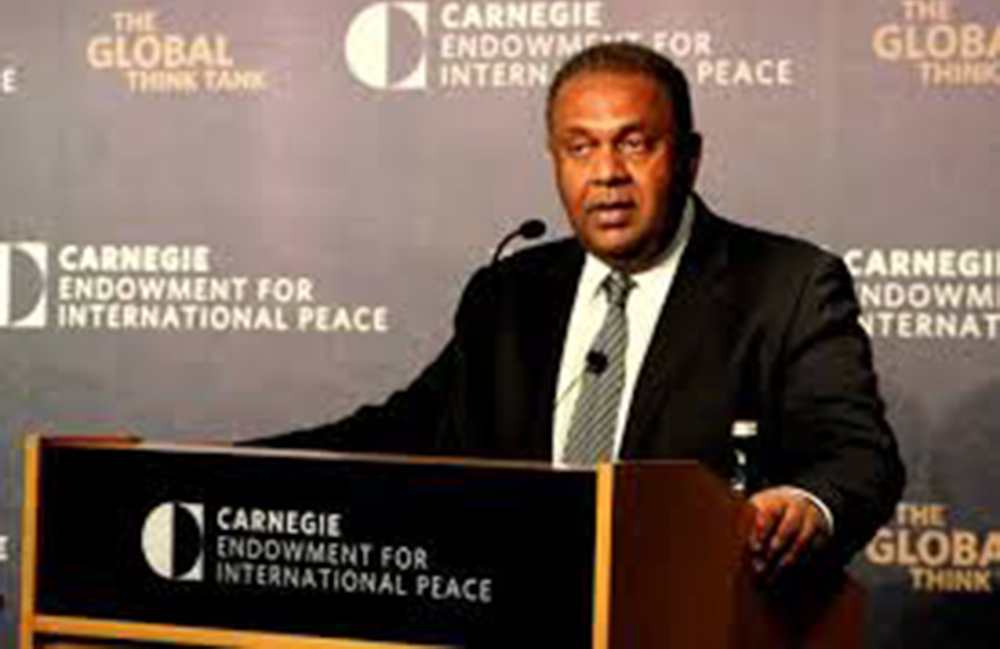
Mangala’s Mistake
 “The rhetoric of hate is often most effective when couched in the idiom of love…. Truth is all around us…Truth is wherever man has glimpsed divinity.” ~ From Gore Vidal’s novel on Roman Emperor Julian
“The rhetoric of hate is often most effective when couched in the idiom of love…. Truth is all around us…Truth is wherever man has glimpsed divinity.” ~ From Gore Vidal’s novel on Roman Emperor Julian
The script of ‘Mangala’s Mistake’ is simple and straightforward. It begins with a pervasive silence of our collective complicity with an untruth.
Mangala decides to pierce the conspiracy of silence with the obvious truth. It is a grave mistake.
You cannot argue with the custodians of Sinhala Buddhism. You cannot question its preeminence in the Sri Lankan polity. That is their exclusive preserve.
They operate on the simple principle that only the fish can study marine biology. Mangala is not a fish. Dabbling in Marine Biology is not his business.
Now, poor Mangala finds that he has made a controversial statement. It has snowballed into a painful reproach against our collective pusillanimity. Mangala is pilloried.
Even those who share Mangala’s values do not wish to be reminded of or discuss their neutrality to truth.
Mangala is not a run of the mill politician. If he was, he would not have made this ethically correct, politically erroneous statement that SriLanka was a country where Sinhala Buddhists were the majority, but all were equal citizens irrespective of their ethnoreligious diversity.
On the face of it, none can dispute its core content. That is if one subscribes to the overall assumption that we are a plural multicultural democracy.
But it makes an impudent challenge to the Sinhalese Buddhist cosmic order which protects the land destined to be the repository of Theravada Buddhism, protected by ‘Satharawaram deviwaru’ – the four guardian deities.
His bold but hopelessly starry-eyed attempt to defend and promote the idea of a civic nation- an inclusive Sri Lankan nation in the present exceptionally incendiary climate is unfortunate. He would be lucky to have any defenders.
This writer counts himself as one of those defenders. But the price is high. Refusing to take part in ‘a lie’ is a simple courageous step. Such situations are neither new nor unexampled. They have happened before and will happen again. That is how nations progress and defenders of truth are remembered in history.
Mangala can take solace in John Steinbeck the novelist who gave his finest work, the biblical name ‘Grapes of Wrath.’ “It takes great courage to back truth unacceptable to our times. There’s a punishment for it, and it’s usually crucifixion.”
The Minister of National Integration, Official Languages, Social Progress and Hindu Religious Affairs Mano Ganeshan has firmly reiterated that Sri Lanka is a Sinhala Buddhist country.
Addressing the gathering of the ‘Jathika Maga’ movement at the BMICH, he has said that we were people of one nation, but it was a Sinhala Buddhist country.
Mano Ganesan whose constituency consists of Tamils permanently domiciled in metropolitan Colombo has very sensibly explained why he holds that view.
“It was not good to say that Sri Lanka is not a Sinhala Buddhist country. Although, there are different communities living in the country, we should admit that Sri Lanka is a Sinhala Buddhist country.”
Mark the distinction. Mano Ganesan does not say Mangala is wrong. He merely observes that Mangala’s statement is not good. What Minister Mano Ganesan attempts to tell us is that what Mangala has stated is not good, convenient or politically prudent.
The reference to Sri Lanka’s Buddhist ethos of tolerance by his eminence Cardinal Malcom Ranjith made eminent sense.
However, his parable of the Buddhist older brother and younger siblings of other faiths baffled me. My bafflement is on the simple logic that rejects a hierarchical classification of moral purity – the essence of all religions.
On this issue I am open to correction. I possess no deep insight to comparative religions. It never occurred to me to explore the subject. I have a deep and abiding aversion to all categories of opiates.
The confusion over Mangala’s statement was soon resolved quickly firmly and with absolute finality by Venerable Mawarelle Bhaddiya thero who addressed the ‘Jathika Maga’ parley at the BMICH on Tuesday. He presented an eloquently framed proposition.
කාර්දිනල් තුමාට මෙය පිළිගන්ට පුලුවන්නම් මොකද මංගල සමරවීරට බැරි ? “Cardinal thumata meya piliganta puluwannam mokada Mangala Samaraweerata bari ? “
When His eminence the Cardinal has pronounced that ours is a Sinhala Buddhist country, what is Mangala groaning about?
The persuasive rhetoric of Venerable Mawarelle Bhaddiya thero has an irresistible resonance with the theory of ‘spontaneous consent’ with which the masses concede to the hegemony of a dominant group proposed by the Italian Marxist theoretician Antonio Gramsci.
He wrote extensively on it, while languishing in one of Mussolini’s prison where he finally died.
Although he does not offer a clear-sighted definition of cultural hegemony (he was weary of his Fascist prison censors) Gramsci explained the process of ‘spontaneous consent’.
Mangala’s rejoinder should have really come from the JVP that calls itself a Marxist party. But how can Sinhala Buddhist Marxists commit that kind of heresy?
The ruling group determines the direction of the social discourse. Subordinate groups are manipulatively persuaded to come on board.
Consent is a complex mental activity – a “contradictory consciousness” mixing resistance and resignation or approval and apathy. Oscillating between approval and apathy is the lot of Mano Ganeshan grappling with the serious task of national reconciliation.
In this heated climate we are missing the point. This is not about the sanctity of belief systems.
Underneath the verbiage of heritage and purity of tradition there is a hegemonic consensus that defines access to wealth and power. The real
debate is about the power relations that developed in post war Sri Lanka.
In 2012, Professor Nira Wickremesinghe made an incisive inquiry into the state sponsored project to shape the present by postulating history as heritage.
In the post war period, the study of history was quietly abandoned to the mercies of film producers and perception engineers advancing the political project of the state.
The versatile actor Jackson Anthony replaced the Distinguished Scholar Senarath Parnavithane as our interlocutor with a past that was once obscure but now offering immense possibilities harking back to the days of Ravana.
The irony of it all is that the government was in deep slumber just as Kumbhkarna the laid back brother of Ravana was when Islamic terror hit us on Easter Sunday.
One passing thought. A good deed never goes unpunished. I stand by Mangala Samaraweera.
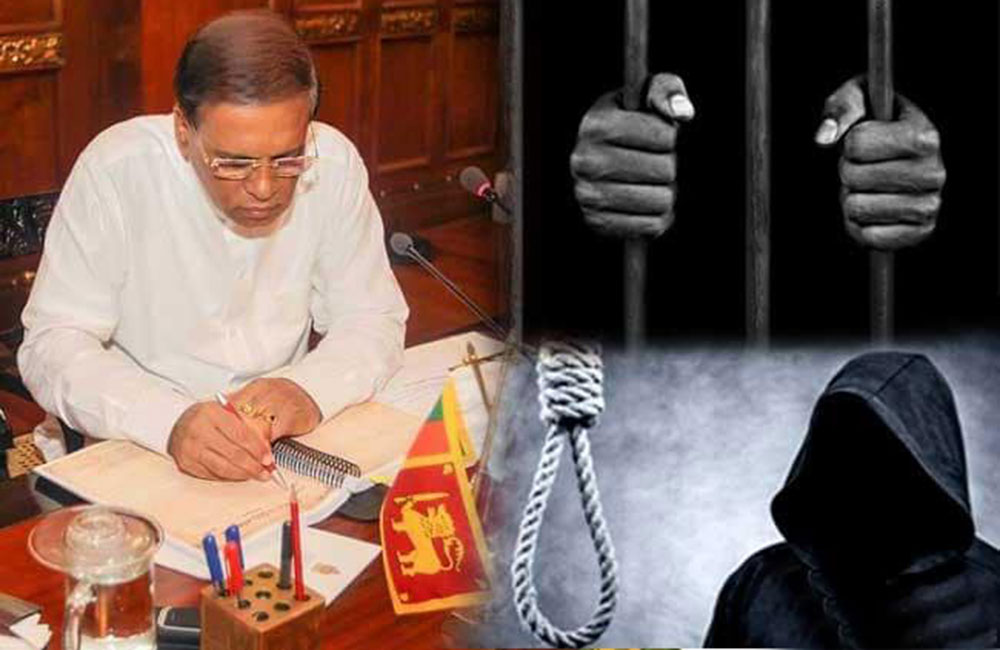
On Resuming the Death Penalty
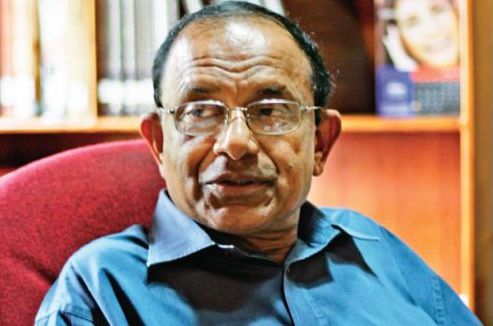 By Dr. Jayampathy Wickramaratne PC
By Dr. Jayampathy Wickramaratne PC
President Sirisena’s decision to resume the death penalty has met with wide disapproval. The main parties in the Government and the Opposition - United National Front, Sri Lanka Podujana Peramuna, Tamil Nationalist Alliance and Janatha Vimukthi Peramuna are all opposed to it. Citizens’ organizations have condemned it. The United Nations, the European Union, the United Nations Office of Drugs and Crime (UNODC) as well as many countries have called for a reversal of the President’s decision. It has been pointed out that the application of the death penalty may also impede international cooperation to fight drug trafficking and terrorism. Many countries have laws that do not allow the exchange of information and extradition with countries which may impose capital punishment. The latest to join the chorus of opposition is the Sri Lanka Medical Association which has brought to the notice of all medical personnel that any involvement in the implementation of the death penalty would be against medical ethics.
Against Government policy, arbitrary and unconstitutional
Since 2007, Sri Lanka has repeatedly voted at the United Nations in favour of resolutions calling for a moratorium on executions as a step towards the ultimate abolition of the death penalty. The 2007 resolution, which has been affirmed many times since then, declared that “the use of the death penalty undermines human dignity, and convinced that a moratorium on the use of the death penalty contributes to the enhancement and progressive development of human rights, that there is no conclusive evidence of the deterrent value of the death penalty and that any miscarriage or failure of justice in the implementation of the death penalty is irreversible and irreparable.” As recently as in December 2018, Sri Lanka again voted in favour of the moratorium.
As a matter of law, I argue that in view of the clear policy of the Government as evident from its continued commitment at the United Nations and the non-implementation of the death penalty from 1976 onwards, the President’s act of implementing the death penalty violates Government policy Also, under Article 42 (1) of the Constitution, it is the Cabinet of Ministers that is charged with the direction and control of the Government of the Republic. I therefore argue that the President cannot go against a Government policy. Further, major parties in Parliament are opposed to the resumption of the death penalty. The President is duty-bound to seek the views of Parliament. In the circumstances, the President’s decision to resume the death penalty is irrational, unreasonable, arbitrary and violative of Article 12 (1) of the Constitution.
Irreversible, miscarriage of justice possible
Dr. Colvin R. De Silva stated in Parliament in 1956: “Of all things that the State may take away from man there is one thing which if you take away you cannot only not return, but you can never compensate him for, that is his life.”
History is replete with examples of grave miscarriages of justice resulting from the death penalty. To give just two examples, Timothy Evans was executed on 5 March 1950 in England for murdering a woman. Three years later, another man, John Christie, admitted responsibility for killing six women, including the woman that Evans purportedly killed! In February 1994, authorities in Russia executed serial killer Andrei Chikatilo for the highly publicised murders of 52 people. The authorities acknowledged that they had previously executed the "wrong man," Alexander Kravchenko, for one of the murders in their desire 'to stop the killings quickly.'
Not a deterrent
Results of a 2008 poll of 500 police chiefs in the United States, conducted by R.T. Strategies of Washington, D.C. showed that Police chiefs ranked the death penalty last when asked to name one area as "most important for reducing violent crime." Their higher priorities included increasing the number of police officers, reducing drug abuse, and creating a better economy.
As is well-known, the capital crime rate in States in USA that have the death penalty is not less than in those States which have done away with the death penalty.
Michael L. Radelet, Professor of Sociology at the University of Colorado-Boulder, in his 2009 article "Do Executions Lower Homicide Rates?: The Views of Leading Criminologists” published in 2009 in the Journal of Criminal Law and Criminology wrote:
"Our survey indicates that the vast majority of the world’s top criminologists believe that the empirical research has revealed the deterrence hypothesis for a myth... 88.2% of polled criminologists do not believe that the death penalty is a deterrent... 9.2% answered that the statement '[t]he death penalty significantly reduces the number of homicides' was accurate... Overall, it is clear that however measured, fewer than 10% of the polled experts believe the deterrence effect of the death penalty is stronger than that of long-term imprisonment... Recent econometric studies, which posit that the death penalty has a marginal deterrent effect beyond that of long-term imprisonment, are so limited or flawed that they have failed to undermine consensus.
In short, the consensus among criminologists is that the death penalty does not add any significant deterrent effect above that of long-term imprisonment." (Emphasis added).
No previous President has sanctioned death penalty
Although the death penalty is in the law books, it has remained only on paper and no President under the present Constitution has implemented it.
In 2005, when the accused in High Court Judge Sarath Ambepitiya murder case were convicted, there were fervent calls for the resumption of the death penalty. Fearing that President Chandrika Kumaratunga would relent, several persons requested me to discuss the matter with her. Despite the fact that Ambepitiya was my batch mate at Law College, I met President Kumaratunga, armed with facts and figures from across the world. Before I could finish my first sentence, she cut me short and said: “Whatever people may say, it is I who have to sign a death warrant. I will never sign”. That was the shortest conversation I have had with her. I was very impressed because this came from a person whose father and husband had both been assassinated and who herself had miraculously escaped an assassination attempt, losing an eye.
When the appeals of the accused in the Ambepitiya murder case were dismissed in 2006, again there were calls for executing at least the main accused. However, President Mahinda Rajapakse, also a batch mate of Sarath Ambepitiya, declined. I was happy to see him reiterate his opposition to the death penalty last week.
If President Sirisena does go ahead with the executions, he, as a Buddhist, will never be able to sleep peacefully; the ghosts of the four convicts will haunt him forever. President Sirisena has on more than one occasion gone back on promises and commitments, the latest being his outburst against the Nineteenth Amendment which he himself spearheaded, now calling it a curse. I will not be surprised if he goes ahead with the executions and claim a few years later that he had made a mistake.
It is apt to end this piece with a quotation from the leading judgment of the South African Constitutional Court in the landmark case of Makwanyane where the Court unanimously held that the death penalty violated the right to life: “The greatest deterrent to crime is the likelihood that offenders will be apprehended, convicted and punished. It is that which is presently lacking in our criminal justice system....” [1995] (3) SA 391, [122] (CC). President Sirisena needs to wake up and realize that it is the same that is lacking in the Sri Lankan legal system as well.
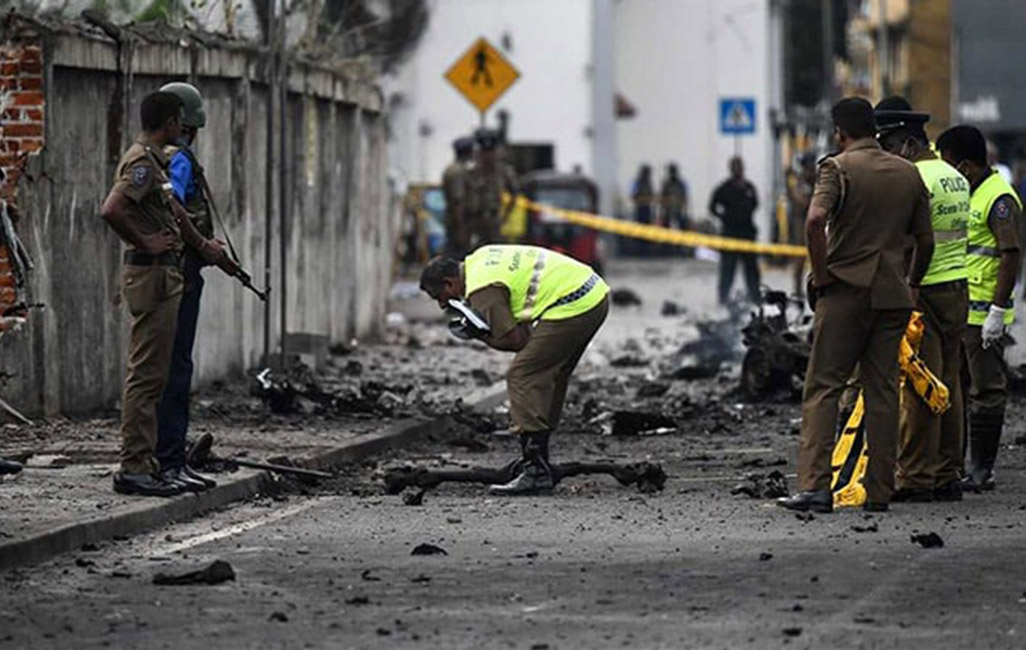
Was The Sri Lankan Law Adequate For Dealing With The Easter Bombers Before They Attacked?
Was The Sri Lankan Law Adequate For Dealing With The Easter Bombers Before They Attacked?
By Asanga Welikala
The Prime Minister has gone on record with the international media saying that, even though Sri Lankan authorities were aware of Sri Lankan jihadists who had returned from Syria who might be engaged in questionable activities, the country’s laws prevented action being taken. This is not true, and only serves to evade accountability, because there are a number of existing laws that could have been used to arrest and investigate these persons. The most obvious is the Prevention of Terrorism Act 1979 (the PTA), which authorises the arrest and/or detention of persons suspected of the kind of terrorism-related activities that those who had joined Islamic State (IS) and returned to Sri Lanka would clearly be covered by.
There is also the International Covenant on Civil and Political Rights Act 2007 which makes it a criminal offence to incite religious hatred and to propagate war. This Act also makes it a criminal offence to attempt, aid, abet, or threaten to commit acts of inciting religious hatred or propagating war. There is the Suppression of Terrorist Bombings Act 1999 which again covers attempts to commit, or aiding and abetting, terrorist bombings. There are also various provisions in the Penal Code in relation to murder, hurt, use of criminal force, and criminal conspiracy, as well as attempting to commit any of these offences, that could have been used. Finally, there are UN sanctions against IS which have been given effect by domestic statutory instruments under the United Nations Act 1968. These are regulations made under the United Nations Act 1968 to give effect to Sri Lanka’s international obligations with regard to the UN anti-terrorism sanctions regime. They were first made in 2012 and subsequently amended in 2016 to specifically include Islamic State (or Islamic State of Iraq and Levant, or Da’esh). The regulations set out the domestic machinery through which UN sanctions against these terror groups can be upheld.
Section 27 of the PTA could easily have been used to proscribe the National Thowheed Jama’ath (NTJ) or any other such organisation. This provision gives the Minister the power make regulations for the purpose of carrying out or giving effect to the principles and provisions of the PTA. A proscription order or regulation under Section 27 must be published in the Gazette and comes into operation on a date prescribed by the relevant Minister. As soon as convenient, such regulations must be brought before Parliament for approval, and they are deemed rescinded if parliamentary approval has not been given. The Liberation Tigers of Tamil Eelam (LTTE) was first proscribed in the wake of the bombing of the Temple of the Tooth in 1998 by emergency regulations. In 2001, when the government lost its majority in Parliament and the state of emergency lapsed, so did the ban on the LTTE. The President then used Section 27 of the PTA to reintroduce the proscription. Even after the state of emergency was terminated after the war in 2011, PTA regulations were made to continue to the proscription of the LTTE and the Tamil Rehabilitation Organisation (TRO), which are still in force. So even without a state of emergency, the PTA provides a wide proscribing power to the government in relation to organisations associated with terrorism.
It can therefore be seen that existing laws were certainly sufficient to detain, investigate, and convict, and even to proscribe, the individuals and groups currently being identified with the Easter Sunday attacks. Had the evidence that had been emerging about these activities been taken seriously and acted upon, then we could have made meaningful progress in preventing the attacks. If it had proved necessary, laws could also have been swiftly amended to deal with any gaps.
However, to the extent that there is an international dimension to these attacks, it is fair to say that Sri Lankan laws needed to be updated to take account of the new globalised context of terrorism. One of the purposes of the Counter Terrorism Bill currently being considered by a parliamentary oversight committee was to modernise our anti-terrorism powers framework in the context of global terrorism. It is important to stress that several critical defects in the Bill need to be corrected so that there are effective and adequate safeguards against the abuse of anti-terrorism powers. However, the government has been both opaque in the process of drafting and dilatory in enacting this legislation.
We are familiar with the criticism about the tardiness and inefficiency of governments when it comes to areas like economic development and even constitutional reform, where a globalised world constantly outpaces the Sri Lankan way of doing things. The events of Easter Sunday have tragically demonstrated the consequences of this lethargy when it comes to securing our society against internationalised terrorism.
While we can no longer afford the luxury of isolated indolence, the various instances of incompetence and dysfunction that allowed the attacks to happen do not justify the arrogation of excessive powers by the government after the fact. More than arguably, the emergency regulations promulgated last week in the aftermath of the attacks are overbroad and prone to abuse, and potentially transgress the outer limits of the restrictions on fundamental rights permitted by our Constitution. The same danger applies to kneejerk responses such as the announcement by the President that he has ordered the preparation of new counterterrorism legislation. Not only does the President not have any moral authority left to direct the country’s response to the Easter Sunday tragedy given his palpable responsibility for the errors and omissions that led to it, but he is an intentional violator of the Constitution and so demonstrably out of his depth in the high office he holds, that it would be ridiculous to entrust him with such a task. In combatting the clear and present danger of international terrorism, the importance of striking the proper balance between security and freedom cannot be overstated. For this, all counterterrorism measures going forward must conform to the minimum standards established by both the Constitution and international law.
(Groundviews)
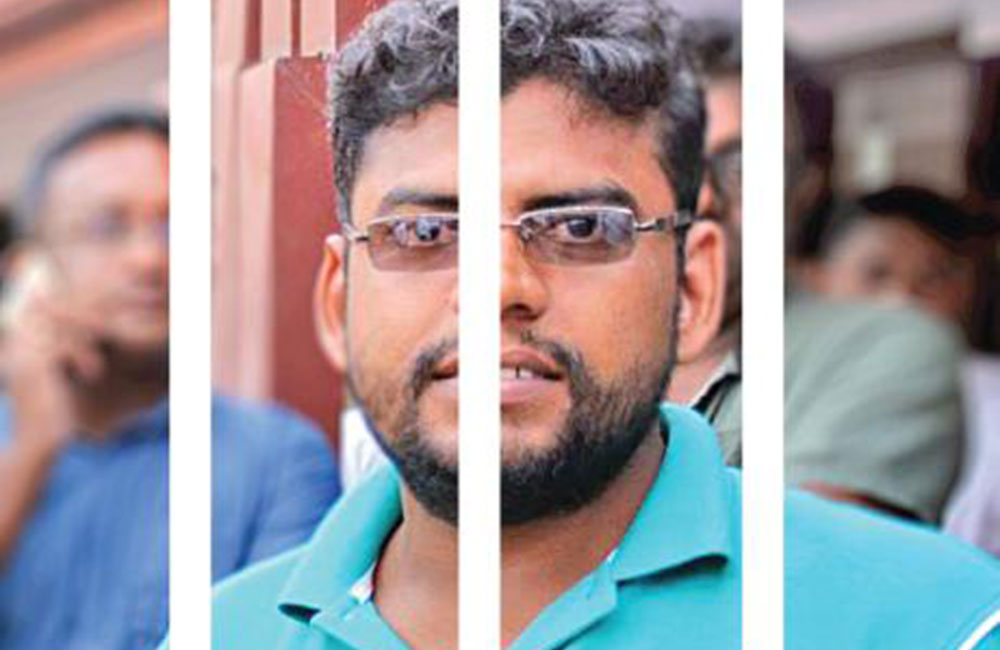
Blasphemy and the Prisoner of Religion
For the last 11 weeks Shakthika Sathkumara, an award-winning creative writer, has been deprived of his liberty by the State, for what appears to be the crime of blasphemy. Apart from posing an existential threat to artistic expression, his imprisonment also gravely undermines the quintessential spirit of the Buddha’s doctrine.
Blasphemy is a firmly established concept in Abrahamic religions, where the idea of causing offence to some inviolable, sacred object or person has been honed and executed by religious institutions for millennia. For instance, the book of Leviticus in the Bible’s Old Testament airily prescribes stoning as a punishment for blasphemy. More recently the former Iranian leader and cleric Ayatollah Khomeini, in a similar vein, called for the death of author Salman Rushdie whose bestselling book Satanic Verses was deemed blasphemous. Not to be outdone, Catholics and the Evangelical right found Martin Scorsese’s classic film The Last Temptation of Christ blasphemous – though they stopped well short of seeking his death. While most religions quickly move to sacralize aspects, ideas or rituals accompanied by prohibitions articulated in the central sacred texts – Buddhism has until now remained a striking exception.
In Buddhism unlike other religions of the world, the idea of blasphemy is entirely and unsurprisingly absent. It is an absence that is possibly best explained by that curious and appealing word Ehipassiko – the invitation to investigate and evaluate the Buddhist doctrine. Ehipassiko makes no monopolistic or exclusive claim on the truth, no divine revelation, no elected human agent, no threats of death or damnation, no guilt edged promise of a special afterlife. It is a gentle but intellectually assured invitation to the reasoning mind with the confidence that dispenses with the politics of insecurity – meaning ‘come and see’.
Blasphemy is antithetical to Buddhism for another reason. In its thoroughly modern humanism, Buddhism empowers the individual, with his capacity for critical reasoning and willpower, to be at the centre of the liberation project. When critical reasoning (articulated in the Kalama Sutta) supplants divine revelation as the chief tool in seeking knowledge and understanding, it necessarily has to be accompanied by the freedom to think, question, argue and express one’s self. Unlike other religions, Buddhism does not prescribe what is right thought, speech or action. Instead, it offers a robust analytical framework to assess right thought, action and speech. The onus and freedom to determine what is right lies with the individual. The fact that people have differing ideas of the truth and the acceptance of the plurality of truths is brought out most extraordinarily in the Kimsukha Sutta.
It is perhaps because of this noisy (and chaotic) freedom of expression that, more so perhaps than any other religion, Buddhism has devoted so much of its founding doctrinal texts to detailing dispute resolution mechanisms. The Samagama Sutta is an entire discourse on conflict management – and again vitally modern in its approach. It commences with a root cause analysis deeply resonant with modern conflict resolution theory and offers seven working models for the settlement of disputes.(See G.A. Somaratne’s excellent essay on Ancient Methods of Resolving Conflict).
In this light, depriving a writer of his liberty for expressing an idea about Buddhism is not only damaging to the very central tenet of the Buddha’s emancipatory venture, it is deeply antithetical to the Buddhist approach to knowledge and intellectual disputes. In fact, the Buddhist commentary decries the heavy-handed ‘balavamhi balavattho’ – might is right, the approach taken by agents of the state in depriving Sathkumara of his liberty.
In the Vinaya Pitaka, which deals in thoroughly legalistic detail with misdemeanours, infringements and crimes in the Sangha, the intention behind the act is a matter of vital importance when evaluating positive actions from negative ones. (It is worth noting in passing that 5th Century B.C. Buddhist clerical jurisprudence is in perfect congruence with modern criminal law in its separation of the intention of a crime from the physical action when assessing culpability). Intentionality is so central to Buddhist virtue that the Buddha started off his son Rahula’s Buddhist education with this idea. There is sadly no discussion at all about Sathkumara’s artistic intentions or purpose. What indeed would the Buddha have made of Sri Lankan Buddhists?
This primitive, dangerous and alien idea of blasphemy, based on unreasoning fear and an anxious need to protect, is fast creeping into mainstream Buddhism. It threatens the fundamental tenets of the Dhamma – that of the individual’s right to exercise free will and the freedom to discuss ideas – without which Buddhism rapidly degenerates from sublime rationalism into a mindless dark superstition dressed in empty ritual.
The thinking Buddhist in Parliament, the Judiciary and the Attorney General’s Department should reflect on how to skillfully protect and sustain the invaluable doctrine of the Buddha from the insecurities of the so-called protectors of Buddhism. They should also free us from the ugly stain of having ‘prisoners of Buddhism’ like Sathkumara – otherwise, before we know it, we might have a ‘Buddhist section’ in our prisons as well as in our Constitution and cemeteries.
(Raisa Wickramatunge - Ground Views)

Constitutional reform in Sri Lanka
By Asoka Banadarage

The more than three-decade armed conflict between the Sinhala majority government of Sri Lanka and the Liberation Tigers of Tamil Eelam) came to an end with the defeat of the LTTE in May 2009. However, the international political struggle to establish an autonomous Tamil state in the Northern and Eastern Provinces continues unabated. Internationally backed efforts to change the “foremost place” that the Sri Lankan constitution gives to Buddhism, the religion of the Sinhala majority, are also advancing.
An October 2015 Human Rights Council Resolution co-sponsored by the US and Sri Lankan governments calls on the latter to devolve power (on the basis of the 13th Amendment to the Sri Lankan constitution) as the way to political settlement, reconciliation and human rights. High-level US government officials have admitted a “direct link” between the UN resolution and a new constitution for Sri Lanka. They have offered assistance to draft and monitor its adoption claiming “a shared responsibility to help this process through.”
Numerous other Western governments, non-governmental organizations and the UN are also involved in the constitutional reform process in Sri Lanka. In September 2016, the United States also signed a partnership with Sri Lanka allowing the US House of Representatives to “work with” the Sri Lankan Parliament to help develop an “accountable, effective and independent” legislature.
The current Sri Lankan government came to power in January 2015 with a mandate to abolish the executive presidency and reform the electoral system. It does not have a mandate to introduce a new constitution and change the governance structure from a unitary to a federal state or tinker with the “foremost place” given to Buddhism in the constitution.
However, given enormous pressure from the “international community” and the Tamil separatist lobby, the government is moving forward with constitutional changes to the long-established unitary structure of the Sri Lankan state and the position afforded Buddhism, in addition to abolition of the powerful executive presidency.
In March 2016, Parliament adopted a resolution to establish a Constitutional Assembly (comprising all the members of Parliament sitting as a separate body) to develop a new constitution. The Steering Committee of the Constitutional Assembly released its Interim Report on September 21, 2017, based on the expansion of the 13th Amendment (imposed by India in 1987) and the recommendations of the Constitutional Reform Subcommittee on Center-Periphery Relations.
This subcommittee is made up of 11 MPs drawn from different political parties. It is chaired by a member of the ITAK (Illankai Tamil Arasu Kachchi, or Tamil State Party) commonly known as the Federal Party in English. It was established in 1949, just one year after Sri Lanka’s independence from the British, by S J V Chelvanayakam, who envisaged federalism as a stepping-stone to eventual Tamil secession.
A report by a Constitutional Expert Committee based on the 2017 Interim Report of the Steering Committee of the Constitutional Assembly was tabled in Parliament last Friday. Although the Expert Report, which is structured along the lines of the current constitution, can be described as a “draft constitution,” the government denies that is what it is.
The lack of transparency and information about the constitution-making process makes it ever more important to consider the proposed reforms and their implications for peace and stability of Sri Lanka, the South Asian region and beyond.
Buddhism
Article 9 of the current constitution states, “The Republic of Sri Lanka shall give to Buddhism the foremost place and accordingly it shall be the duty of the State to protect and foster the Buddha Sasana, while assuring to all religions the rights granted by Articles 10 and 14(1)(e).” Article 10 states, “Every person is entitled to freedom of thought, conscience and religion, including the freedom to have or to adopt a religion or belief of his choice.” Article 14(1) states, “Every citizen is entitled to the freedom, either by himself or in association with others, and either in public or in private, to manifest his religion or belief in worship, observance, practice or teaching.”
Despite the extensive protections given all religions in the current constitution, the draft constitution makes two alternative proposals. The first removes the words “The Republic” from Article 9, thereby taking away the commitment of the state to giving Buddhism the foremost place. As a recent statement by the National Joint Committee points out, “The effect of this is [that while] Sri Lanka treats Buddhism as foremost, the state itself does not recognize so.”
The second alternative to Article 9, which adds the words “while treating all religions and beliefs with honor and dignity, and without discrimination,” dilutes the prevailing meaning of Article 9.
While Buddhism is the religion of 70% of the island’s population, Sri Lanka is a multi-ethnic, multi-religious society with long-established traditions of mutual co-existence and harmony upheld by the constitution. The country allows extensive Christian evangelical and Islamic Wahhabi proselytization and conversion, which is not permitted in Islamic and many other nations.
Given these realities of openness and tolerance, there is concern among Buddhist monks and laity over the need to change the “foremost place” given to Buddhism in a new constitution. There is fear that the erosion of the historical relationship between Buddhism and the state would contribute to the processes of political fragmentation and destabilization. These concerns have given rise to widespread opposition to the proposed constitutional reforms.
The unitary state
Article 2 of the current constitution clearly states: “The Republic of Sri Lanka is a Unitary State.” The Interim Report and the draft constitution, however, propose to replace Article 2 with the ambiguous statement “Sri Lanka (Ceylon) … is an aekiya rajyaya / orumiththa nadu, consisting of the institutions of the Center and of the Provinces which shall exercise power as laid down in the Constitution.”
The proposed clause circumvents the English terms “unitary” and “federal” by duplicitous use of Sinhala and Tamil terms even in the English text. The proposed Sinhala and Tamil terms carry different meanings: the Sinhala aekiya rajyaya can be translated as “unitary state” while the Tamil orumiththa nadu can be translated as “united country” or a country formed by amalgamation.
By giving divergent interpretations of the identity of the state to the two linguistic communities, the clause lays the ground for new ethno-linguistic conflicts. If the government is committed to preserving the unitary state as it claims, why is the word “unitary” not retained in the English language, which is used in all international communication as well as most local official and legal transactions, including Supreme Court decisions?
The objective of the draft constitution is to grant “maximum devolution” and to create a Federated Union of Provinces where governance is constitutionally divided and the central authority cannot withdraw devolved powers at will. The province is promoted “as the primary unit of devolution” and the functioning of local authorities is brought almost entirely under the provincial councils.
Under the 13th Amendment, the governor, as the representative of the central government in each province, retains extensive executive powers including the right to dissolve a provincial council. Under the new proposals, however, the governor is reduced to a nominal status and the central government becomes subservient to the provincial council at the regional level.
For example, the proposed constitutional reforms would require the central government to request lands for national projects from the provincial administrations. A National Land Commission with equal representation of the central government and the provinces and representatives of all the major communities will be appointed to oversee land and water policies.
When the center and the provinces cannot agree on issues, they will be referred to the new supreme arbiter, the Constitutional Court, not the judicial bodies of Sri Lanka, including the Supreme Court.
The Interim Report claims that a provincial council may not advocate or take steps toward secession from Sri Lanka, and if a provincial administration poses “a clear and present danger to the territorial integrity and sovereignty of the Republic,” the president of Sri Lanka can assume “the functions of the administration of the Province and … dissolve the Provincial Council.” However, unlike the 13th Amendment, the proposed constitutional reforms do not allow Parliament to confer powers over provincial councils to the president.
The draft constitution abolishes the executive presidency and the election of the president directly by the people. It advocates the election of the president by Parliament and a newly created “second chamber.” These and other features in the reforms greatly undermine the authority of the president to intervene in the face of threats to the country’s sovereignty and territorial integrity.
Explicit provisions to retain the center’s power to override provincial statutes and the Constitutional Court are not provided. Without such provisions, the anti-secessionist statements in the draft constitution are mere platitudes to appease popular support for the unitary state.
Sovereignty and territorial integrity
The draft constitution provides a framework for each province to become constitutionally independent and have the freedom to secede from the federal union. Although only Tamil politicians claiming to represent the Northern Province (while living in the south) have been clamoring for separation, the proposed federal structure is likely to encourage other politicians to take up secession as well. It is likely to revive the call for a separate Muslim political entity in the Eastern Province, which emerged during the failed 2002 Norwegian-facilitated peace process.
Constitutional guarantees against breakups have not stopped secessionist efforts in numerous other regions in the world, such as Kosovo, Catalonia, Iraq and even Tamil Nadu. The political fragmentation and destabilization engendered by the draft constitution could result in several warring mini-states on the island.
Political fragmentation and destabilization could facilitate greater foreign political intervention, economic control over local assets and geopolitical rivalries. Sri Lanka is located in the heart of the Indian Ocean, which is expected to become one of the most strategically contested regions in the world.
Already Sri Lanka is a party to China’s Maritime Belt and Silk Road initiative. India also has numerous bilateral projects, such as the oil tank farms in the strategically located Trincomalee port. In August 2016 the first joint operation between the US and the Sri Lankan military took place in Jaffna with participation of TNA (Tamil National Alliance) politicians at the launch. Last month, the US Navy announced the setting up of a “logistic hub” in Sri Lanka to secure support, supplies and services at sea.
Sri Lankans from all ethnic, religious, social-class and political backgrounds need to understand the geopolitical threats facing the country, and the dangers of proposed constitutional reforms, and stand up for Sri Lanka’s sovereignty and territorial integrity.
It is important for us to put aside narrow ethno-religious divisions promoted by self-interested politicians and foreign interests and come together to protect the ecological integrity and sustainability of our island home, which is severely threatened by climate change – rising sea levels, frequent droughts, floods, landslides and the like.
Asoka Bandarage PhD is the author of Sustainability and Well-Being, The Separatist Conflict in Sri Lanka, Women, Population and Global Crisis, Colonialism in Sri Lanka and many other publications. She serves on the boards of the Interfaith Moral Action on Climate and Critical Asian Studies and has taught at Yale, Brandeis, Mount Holyoke, Georgetown, American and other universities.
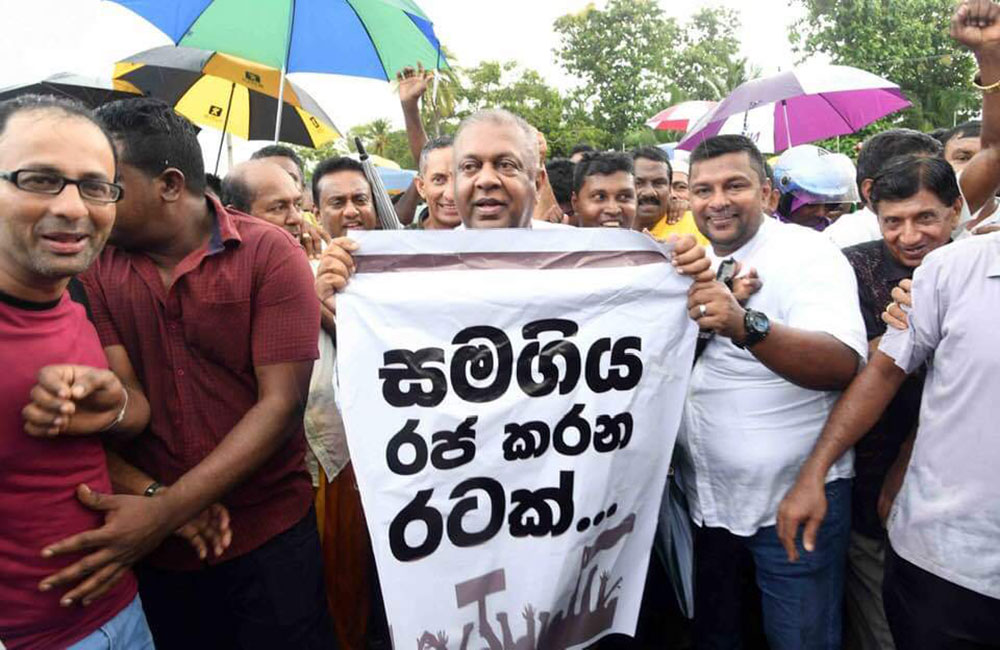
Mangala challenges the politics of division
Mangala challenges the politics of division
By Harim Peiris
Finance Minister Mangala Samaraweera, who recently celebrated 30 years in public life, is certainly no ordinary politician. He has always, throughout his career, been more of a leader, than a follower and generally challenged conventional political wisdom and done so, mostly successfully. During his youthful beginnings in politics, during the second JVP insurrection, he fought hard for human rights and the cause of the disappeared. When the southern SLFP leadership was toying with boycotting the 1989 general election, he jumped into the fray.
As a young freshman SLFP parliamentarian in 1989, he was a key operative in seeking the easing upstairs of the iconic Madam Sirimavo Bandaranaike and the induction of the next generation of leadership under Chandrika Bandaranaike Kumaratunga. As CBK then resolutely swung the SLFP, from the opponent of provincial councils, into an enlightened political party presenting a political package of accommodation and inclusiveness, Mangala Samaraweera was at the forefront of that change through the "Sudu-Nelum" movement.
In more recent times, he was one of the earliest nay-sayers about the Rajapakse regime’s excesses, from its own front benches as Foreign Minister and his critique of its human rights and forecast of its international consequences was almost prophetic in their accuracy and remarkable in its foresight. During the current post 2015 dispensation, Mangala took the leadership on the delivery of national reconciliation as Foreign Minister and now as Finance Minister, he is spearheading the next generation of essential reforms and our tortuously slow economic recovery from the expensive Chinese debt funded, allegedly corrupt, budget busting white elephant projects of the previous era.
Unifying rather than dividing
So, Minister Mangala Samaraweera is a clear opinion leader and a catalyst for change. Recently, especially in the aftermath of the horrendous Easter bomb attacks, he has been articulating a unifying vision of us coming together as a nation to face our common enemy. This is in the context, where the predominant political response, after the initial calm created by the Christian community’s resolute decision to forgive and not retaliate, has been to divide and hate monger. He has also not been reluctant to take on the sacred cows of our religious leaders, when they are engaging in more temporal pursuits such as "fasts unto deaths" and open support for the same.
Sri Lanka is a deeply divided society. We are divided along every possible social fault line imaginable. We are divided along ethnic, religious, linguistic, caste and class lines. Sri Lanka has essentially failed post-independence to forge a multi-ethnic, multi-religious, multi-lingual national identity which over aches our more parochial ethno-religious identities. In fact, our giant neighbour India has done a remarkable job in creating such a national Indian identity from a mosaic of different ethno-linguistic groups. The goal of a Sri Lankan identity remains elusive and the task of reforms towards a Sri Lankan state which accommodates the diversity of her peoples is challenging.
Sri Lankan politics and politicians, and not least allied industries such as media, basically at some level play off on the divisions in our society, to seek leadership. As Mangala wrote in his recent essay of 5th June titled The Cardinal Sin. I quote, "When a political party, media organization or religious leader depends for their survival on one group of Sri Lankans becoming afraid of another, we must be wary of them".
Identifying the real enemy
Sri Lanka’s post-Independence history has witnessed people fighting. At the outset we disenfranchised the Tamils of Indian decent, then we got rid of the Burghers, then fought along economic class lines under the JVP banner, simultaneously engaging in a near ruinous civil war with the Tamil community and post-war launched an assault on the Muslim community’s business interests under the guise of anti-halal, poisoned toffees and every other imagined paranoia we could come up.
Sri Lanka and specifically the Christian community, in both their Roman Catholic and non-Roman traditions were the victims of a radical Islamic group’s terrorist attack. Mercifully and with full credit to our security forces, no further attacks were allowed and the terror network degraded beyond offensive capability. However, as Mangala Samaraweera so clearly articulates, the response to violent Islamic extremism is not anti-Islamic extremism or Islamophobia. In fact, the wave of anti-Muslim violence has been distracting and diverting the attention of the law enforcement and the security forces. Further violence and discrimination against an entire community for the actions of a few, is a sure recipe for radicalizing the majority. It is the path we trod in the 1980s vis-a-vis Tamil militants and the Tamil community and we must not repeat those mistakes. As the reports from the Parliamentary Select Committee (PSC) probing the attacks are revealing, we had information on the terror cells developing in Kathankudy from the Muslim community itself. But the state chose to take no action, until an attack took place and have now closed the stable door once the horse has bolted. We are now obsessed with chasing red herrings of sterilizing gynecologists, rather than tracking down any remaining foreign-trained ISIS terrorists and hate mongers and rabble rousers of whatever hue and persuasion.
The real enemy of Sri Lanka, are those that seek to divide us. For united in our diversity we stand and divided we fall.

Sri Lanka Still Hunting for Its ‘Disappeared’
By Meenakshi Ganguly
In September 2017, my colleague and I met Jesintha Peiris.
Jesintha’s husband and son were among the tens of thousands who disappeared in Sri Lanka’s three-decade-long civil war. They had gone to Colombo in August 2008 to apply for a visa to the United Kingdom and never returned.
Unlike the cases of many other ethnic Tamils believed to have been wrongfully apprehended by the security forces, there had been some developments. An internal navy inquiry in May 2009 recovered passports, national identity papers, and bank cards of several missing persons from an officer’s quarters. Among them were documents belonging to Jesintha’s missing relatives.
By the time we met with her, much more had been discovered. The police Criminal Investigation Department had found that navy officers had forcibly disappeared at least nine others, apparently for ransom. The investigators believed that the 11 men had first been detained at a navy barracks in Colombo, and then transferred to an underground prison at a naval base in Trincomalee.
Several officers had been arrested for the abductions, but the main person accused, Lt. Commander Chandana Prasad Hettiaarachchi, an intelligence officer known as Navy Sampath, was at large. Jesintha wanted him arrested because she believed he would “tell the truth.” The family apparently received a ransom demand but had not succeeded in paying it. Upset and evidently unwell, Jesintha had wept a lot, saying that the grief was killing her.
The investigation into these disappearances has exposed the culture of impunity that persists in Sri Lanka. Political leaders often say the government will not be “hunting down our war heroes.”
There are no accepted figures, but at least 100,000 people had died by the time the civil war ended in 2009 with the defeat of the separatist Liberation Tigers of Tamil Eelam (LTTE). There were serious violations of the laws of war by both sides. The LTTE committed sectarian massacres and political assassinations and used child soldiers. The military carried out extrajudicial killings, torture, and enforced disappearances
In October 2015, the new government of President Maithripala Sirisena supported a resolution at the United Nations Human Rights Council in Geneva that promoted four transitional justice mechanisms for truth and accountability, including a special court with participation by international investigators, prosecutors, and judges, to ensure that those criminally responsible on both sides would be brought to justice. But Sirisena has also promised that his government would not “allow any foreign forces to lay hands on war heroes,” contradicting pledges to allow international oversight.
In June 2018, police Criminal Investigation Department investigators accused the military, including the chief of defense staff, Admiral Ravindra C. Wijegunaratne, of protecting those responsible for these crimes from prosecution. The admiral denied the allegations while Sirisena questioned the arrests of military officials. Navy Sampath was finally arrested a month later. In September the president clarified that no conflict-related human rights violations were under investigation.
In a surprise development on October 26, Sirisena announced that he had sacked the prime minister and replaced him with Mahinda Rajapaksa, the man he defeated in 2015 after the Rajapaksa government was implicated in widespread rights violations. Even as Sirisena’s maneuver was being challenged in court and in parliament, however, the officer investigating the 11 abductions, Inspector Nishantha Silva, was served transfer orders. The police were under acute pressure to take Silva off the case. Wijegunaratne even accused Silva of being affiliated with the defunct LTTE.
After loud public protests, Silva’s transfer order was reversed. On November 29, the authorities finally arrested Wijeguneratne for his role in shielding Lt.Commander Hettiarachchi — Navy Sampath — from arrest. The admiral was released on bail after a week in custody with court strictures to desist from interfering with the investigation.
While the case must still be prosecuted, the families have more hope that there will be justice. The case nevertheless has highlighted the need to shield such investigations from military and political pressure by including independent international participation.
A month after meeting with us, Jesintha Peiris died from a heart attack, still believing that her husband and son were alive, held as secret captives, and that they would be released once all those responsible had been arrested. However, in January 2018, police investigators arrested a navy officer who they believe had dumped the bodies of all 11, killed in custody, in the sea.
The government needs to recognize that prosecuting grave abuses will mean that some “war heroes” will turn out to be criminals.
Meenakshi Ganguly is South Asia director at Human Rights Watch.
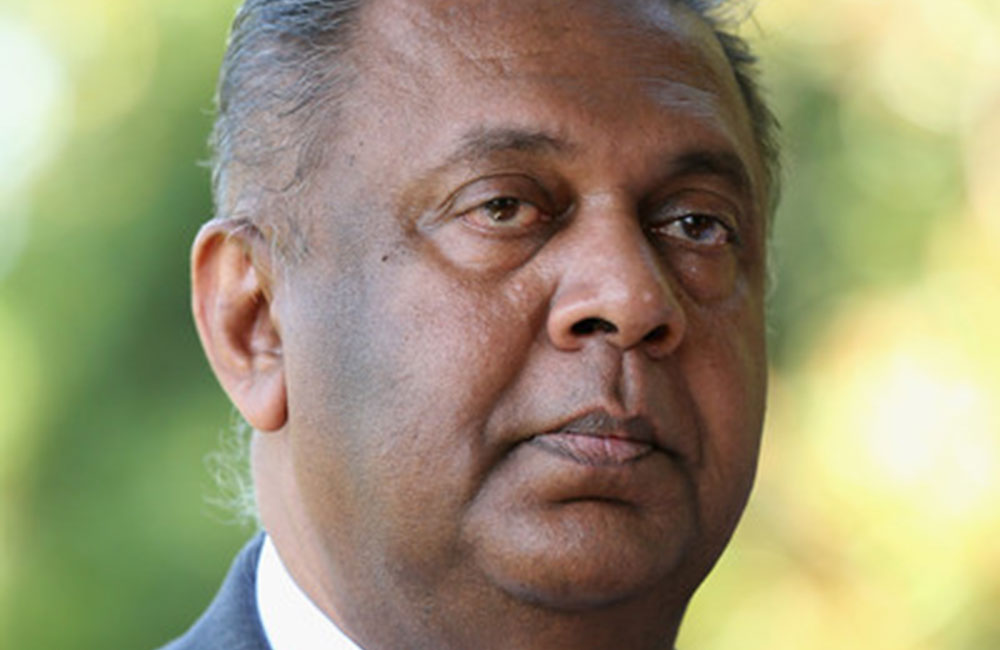
Joining The Mangala Controversy: The Clergy Should Get Off The Backs Of Sri Lankans
By Shyamon Jayasinghe
“Hire a monk,” has become a political strategy. Former President has a virtual headquarters in a temple at Narahenpita. This sync is a living one and the trend is dangerous both to the Buddhist religion and to our politics.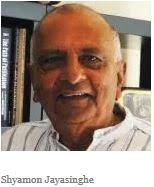
Why Clergy is not Suited to Advice, Anymore
Once again, I observe the Sri Lankan clergy coming out to ‘advice,’ Sri Lankans in this time of crisis. The simple fact is that they are not competent any longer to occupy a privileged position in the advisory panel. In the ancient days of the kings, it would have, understandably, been a different situation when Buddhist clergy represented the educated class and pirivenas were the centres of learning. Since then, the narrative took a different turn. Now, the lay educated classes are way above the knowledge level of monks in general.
As a matter of fact, the monks should think twice before giving bana these days. I have hardly listened to a sound and insightful bana for ages. Banas have become ignorant yawns and the occasion is more for socialising.
How many of our monks have had a general education above A’level-which is the basic minimum? Most of them spend their time in temples memorising Pali texts and studying languages. Even those with degrees are tighlty framed within the ancient languages. They learn no economics, sociology, psychology, politics, anthropology, science, literature etc. They are never in touch with global discourse over topics of contemporary relevance.
The Christian seminaries are a bit better curriculum-wise but, here too, at bottom those aspiring to become priests have barely A’levels. They get bogged down to a life of mucking up the Bible and other sacred texts. This is theology, and theology does not impart knowledge of the empirical world. Theology cannot yield knowledge about existential life.
However ignorant, the sanga has clout in our society because of the robe they put on. Hence, politicians love them. Mahinda Rajapaksa and his cohorts address them reverently as “Ape Hamuduruwane”!As a youth studying at Peradeniya long ago, I witnessed what most of today’s Sri Lankans did not. SWRD Bandaranaike and his MEP brought the clergy onto the stage in 1956 and gave them a big place. The slogan then was: “Veda Gurus Sanga, Govi Kamkaru”!
Banda won with a thumping majority. Within two years, two monks murdered him! They were Buddharakkhita and Somarama. I have vivid memories of visiting the chambers of Buddharakkhita at Kelaniya Rajamahavihara. As a youth in impressionable years that was a shock to see bottles of whisky, gin and wine! But every Buddhist had to worship the bloke. Had Buddharakkhita not assaninated a VIP he, perhaps, would never have seen a jail cell.
Post Buddharakkhita, ordinary people began chasing away political monks and for many decades we did not see these saffrons on stage. Particularly, with the coming of the jaathyalaya regime of Mahinda Rajapaksa the political monks were back again in full fold. Some even had the audacity to enter parliament.
Cardinal Malcolm Ranjith
Peoples’ memories being short, we now see a resurgence of monks. The Catholic Cardinal Most Revd. Malcolm Ranjith has also joined the latter making politically correct pronouncements all the time as crowd -pleasers. Before Malcolm Ranjith, Catholic clergy kept a dignified distance from politicians. At local level some of these did engage in political canvassing but that had been discrete and not widespread.
We heard our Cardinal pontificate the other day that Sri Lanka is a Sinhala Buddhist country! Did he realize that he was compromising his own Catholic flock to a secondary position as citizens? Virtual guests? The latter must pick the crumbs left over by Sinhala-Buddhists? No right to demand equality of treatment? Poor Malcolm Ranjith does not know the logical implications of his public utterances.
I have had occasion in the past to draw references to this Cardinal’s political flirtations during Mahinda’s regime. One of my readers, A PhD Catholic columnist for Colombo Telegraph, commented that this sacred gentleman had placated the former President for favours in the way of getting his relatives into the foreign service. If this were true, there we go…
On another occasion, the Cardinal mentioned as a reason for the rise of the new terrorism the change that took place in government.
Undoubtedly, the Cardinal had to have a say when the slaughter of the ISIS took place in churches during mass. No grudge over that. But remember the Cardinal initially urged the destruction of the attackers but soon became more Christ-like by uttering Mother Teresa language. Over this simple one-act transformation somebody thoguht the Cardinal was fit for the Nobel Prize for Peace. We are aware that the Nobel prize is never awarded for singular acts of micro behaviour like this- except for American leaders like Obama who got it for uttering mere niceties and pleasantries. Unfortunately, our Cardinal is not of Obama standing.
Revd Mawaraliye Baddhiya
This monk is the new rising star among public advisors. He was brought in to speak before a big audience the other day at the BMICH. He looked around for Cardinal Malcolmn Ranjith who had been invited. Malcolm Ranjith, in an act of rare wisdom had not attended. However, Hon Speaker Karu Jayasuriya was there and some others of the educated fraternity. His speech is viral over Yutube. Maraliaya Bhaddiya showed the demeanour of a true Rahathan wahanse-speaking as he did softly, to the point and in careful and benevolent tone a manner. However, he mischievously tried to put the security lapse on Prime Minister, Ranil Wickremesinghe. He said: Our Prime Minister did not attend Security Council meetings because he was not in good terms with Presdient Sirisena. This was a lie (musawaada) and herein the monk violated one of the precepts. The fact is that the PM was not officially a part of the Security Council and this had been a deliberate omission by the man of the Maitree Yugaya. The monk cast no blame on the Opposition’s role. Revd Mawaraliye Bhaddiya also used the occasion to flay Minister Mangala Samaraweera over the latter’s statement that Sri Lanka did not belong to Sinhala Buddhists. As we shall see, Mangala had a valid point, which he thought he must express unafraid. On the other hand Revd Mawara Liye set that aside.
The monk’s hidden agenda was disclosed. However, the gullible in the audience saw the monk as one about to shoot up to Rahath status. Hope he does not start walking on flowers and having lavish birthday parties like the one who has gone famous over claims of having reached Rahath!
Corruption has Taken over the Sanga
There is no denying the obvious: Our Sanga has become largely polticised and corrupt. This is yet another reason why the sanga can no longer be advisor. Corruption and politicisation go together. Our politicians are using members of the Sanga to push their own selfish agendas. Few among this august body have been able to withstand the pressures that material perks bring. “Hire a monk,” has become a political strategy. Former President has a virtual headquarters in a temple at Narahenpita. This sync is a living one and the trend is dangerous both to the Buddhist religion and to our politics. One monk publicly advised Gota to become a Hitler.
Mangala Samaraweera’s Sin
Against a background of political duplicity, political humbug, and political mendaciousness Minister Mangala Samaraweera impresses as a public figure who is unafraid to speak the truth. Mangala has been doing any job given to him very competently and today he stands as a very sound Minister of Finance. Unlike the UNP’s upper flank of Deputy Leaders, Party Orgainsers and so on Mangala fights for his leader and his government.
Now, what is the sin that Revd Mawaraliye talks of that Mangala had committed? The Minister said that Sri Lanka belongs to all Sri Lankans and that, therefore, it is erroneous to call the island a Sinhala Buddhist country. By itself the island known as Sri Lanka is a mere landmass.
Along with demographic changes of populations the composition of the population of all such countries do change. This is a natural process. What would happen in the future one never knows. What if the Chinese take over? Right now, Sri Lanka has a big majority of Sinhala Buddhists. This does not give Sinhala Buddhists any birthright of national ownership.
Minister’s Logic
The Minister had a purpose in making this utterance. He wanted to set out the logic of the necessity of all inhabitants in the country living in harmony and cooperation. Any claims of superior position by one segment of the demography necessarily has the potential for violence. Our recent history has proved this at great cost to the nation. Sinhala Buddhists must wipe this out of our minds if we are to keep peace.
Directly or indirectly, consciously or subconsciously most Sinhala Buddhists bear this notion of superiority. Most of our monks, too, share and pedal this dangerous ideology. Politicians revel in this idea and exploit that to the full. Sri Lanka can never retain peace on this basis. Most persons -lay or clergy- are too focused on petty issues of inter- ethnic relative privilege. This makes us a population geared to bicker within ourselves. The overarching need to make correct economic policy that encourage prosperity recedes into the background whereas that should be in the foreground. Crushing another ethnic or religious group becomes more important. The country is going down the drain.
Our National Priority
Minister Mangala Samraweera has solidly avoided this kind of parochialism. He shares the view of the Prime Minister as to what the country should head for if it is to lift itself from poverty and enter the realm of prosperity; they have both identified the central dynamic required for that. The dynamic is to energise entrepreneurship. The project captioned “Private enterprise Sri Lanka,” is just that. This is the road to prosperity.
Our monks and clergy in general have never been known to focus on the real thing. They must, surely, quit advising us.
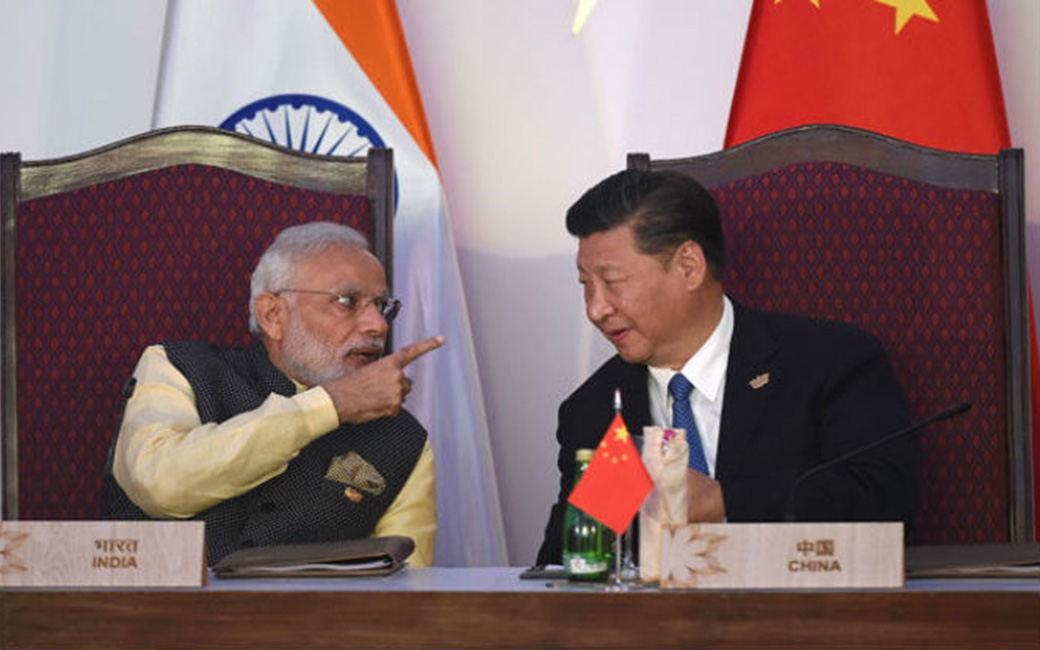
Don’t burn bridges with turbulent neighbours
The Assembly election results announced on December 11 in the three states of Rajasthan, Madhya Pradesh and Chhattisgarh, which have a combined population of 168 million people and elect 65 members of the 545-strong Lok Sabha, caused what the Economist magazine headlined as a “saffron stumble”, and predicted that “India’s political current is rushing towards a turbulent spring”. It certainly put wind in the Congress’ sails, altering the public perception that under Rahul Gandhi’s presidency the Congress was a moribund enterprise.
The world is currently distracted by the growing trade and technology standoff between the United States and China, turmoil on the streets of Paris, the US Congress’ rising irritation with the Saudis, British Prime Minister Theresa May’s plummeting fortunes, and so on, to take note of the implications of the BJP’s stumble before the 2019 parliamentary elections. India’s immediate neighbourhood, on the other hand, can hardly ignore it. China may not fully understand the dynamics of domestic Indian politics, but it can — and will — calculate the implications.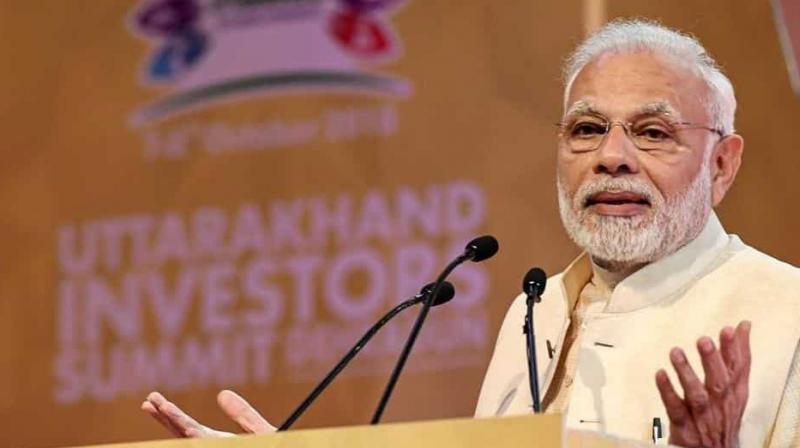 Nepal 1Prime Minister Narendra Modi had during his last Nepal visit flagged off the bus service between Janakpur and Ayodhya, the town associated with Lord Ram. (Photo: PTI)
Nepal 1Prime Minister Narendra Modi had during his last Nepal visit flagged off the bus service between Janakpur and Ayodhya, the town associated with Lord Ram. (Photo: PTI)
Let us take a look at some recent developments in the Saarc region and beyond, against this background. Nepal continues its rebalancing between India and China, perhaps inevitable under a Communist-dominated government. It invited saffron icon Yogi Adityanath, chief minister of Uttar Pradesh and head of the Gorakhnath Math (to which the erstwhile ruling family of Nepal paid obeisance), to a celebration of the marriage of Lord Ram and Sita at Janakpur, known as Sita’s birthplace. Prime Minister Narendra Modi had during his last Nepal visit flagged off the bus service between Janakpur and Ayodhya, the town associated with Lord Ram. Simultaneously, Nepal announced that the Indian rupee would no longer be valid tender in Nepal. Besides symbolising monetary independence, Nepal perhaps reacted to India’s reluctance to take back a huge cache of old, demonetised Indian notes as per old arrangements. It would affect Indian tourists, but the Indian authorities may not be unhappy about plugging the possible illegal flow of Indian currency. But it snaps another historical link between the two nations that share a long and open border, besides faith and culture.
Bhutan is just settling down under a new government, but renewed pressure is inevitable from China for a diplomatic presence there and for Bhutan to rebalance relations between India and China. A weakened government in New Delhi, distracted by elections and with a question mark over the BJP’s return to power can weaken Indian influence in Thimphu. It would anyway be unrealistic for India to expect to keep Bhutan permanently walled off from China.
In Bangladesh, the parliamentary elections are due on December 30. India counts on Sheikh Hasina Wajed of the ruling Awami League to return victorious. But the BJP losing grip in the Hindi belt, which catapulted it into power in 2014, is looking to the eastern states and West Bengal for gaining new electoral space. Its take-no-prisoners approach to fighting the ruling Trinamul Congress in West Bengal depends on stoking the anti-Bangladeshi sentiments. This is a replication of its Assam gambit to capture power. The Supreme Court extending the December 15 deadline to file claims and objections for the inclusion of names in the National Register of Citizens (NRC) indicates the churn caused by the exclusion of over four million persons from the draft NRC. So far, only a million odd have sought review.
Meanwhile, senior BJP leaders have stoked the issue at the hustings for possible use in West Bengal, which has had its Muslim population grow out of line with normal demographic patterns. The BJP’s slogan has been to deport all “intruders”, meaning Bangladeshis. However, Bangladesh has insisted that it has no citizens in India living illegally. This issue and that of the Rohingyas, who have entered India largely via Bangladesh, will rile India-Bangladesh relations after the December 30 elections as Indian inhibitions to not harm Sheikh Hasina politically would evaporate in the face of the BJP’s need to win.
In India’s maritime neighbourhood, the gain in the peaceful transfer of power in the Maldives to an India-friendly President has been offset by the turbulence in Sri Lanka, relieved somewhat by resignation of usurper Prime Minister Mahinda Rajapaksa. But matters will not rest as Mr Rajapaksa may yet return via elections.
Meanwhile, the tension between Prime Minister Ranil Wickremesinghe and President Maithripala Sirisena is bound to cause governance paralysis. India must remain vigilant to stymie forces that favour China over India. In the Maldives, India has to ensure that the rollback of the Chinese intrusion is done with finesse that neither causes domestic difficulties for the new President, as happened over an island in the Seychelles, nor crosses Chinese red lines to avoid a faceoff. All decisions will have to appear taken by Maldivians and in their interest. President Ibrahim Mohamed Solih sent out a clear indication of India’s renewed importance as he began a three-day visit to New Delhi on Sunday, his first trip overseas since taking over.
Pakistan under its charismatic new leader Imran Khan is presenting a different challenge as he is difficult to demonise for domestic political gain in India. His shrewd move by opening the Kartarpur Corridor has already opened political fissures within the Punjab Congress, as indeed between it and the Opposition. The mad scramble to claim credit is balanced by equally loud warnings from Punjab chief minister Capt. Amarinder Singh, which may be exaggerated but are not unrealistic. The corridor, which would not get commissioned till after India’s Lok Sabha elections, can be a bridge for understanding or tension. But it is not the solution to the fundamentally conflicted India-Pakistan ties. Imran Khan has realistically accepted that Islamabad will have to wait till after the Indian elections to try for a resumption of the dialogue.
There is little that Mr Modi can do to earn diplomatic kudos in his time remaining as Prime Minister in his current term. He must ensure that in the panic to win he does not let intemperate and opportunistic BJP leaders burn bridges with neighbours. It takes years to earn the trust of smaller and paranoid Saarc members. It would take simply days or hours to demolish the gains.
*The writer is a former secretary in the external affairs ministry of India. He tweets at @ambkcsingh
Page 1 of 5
